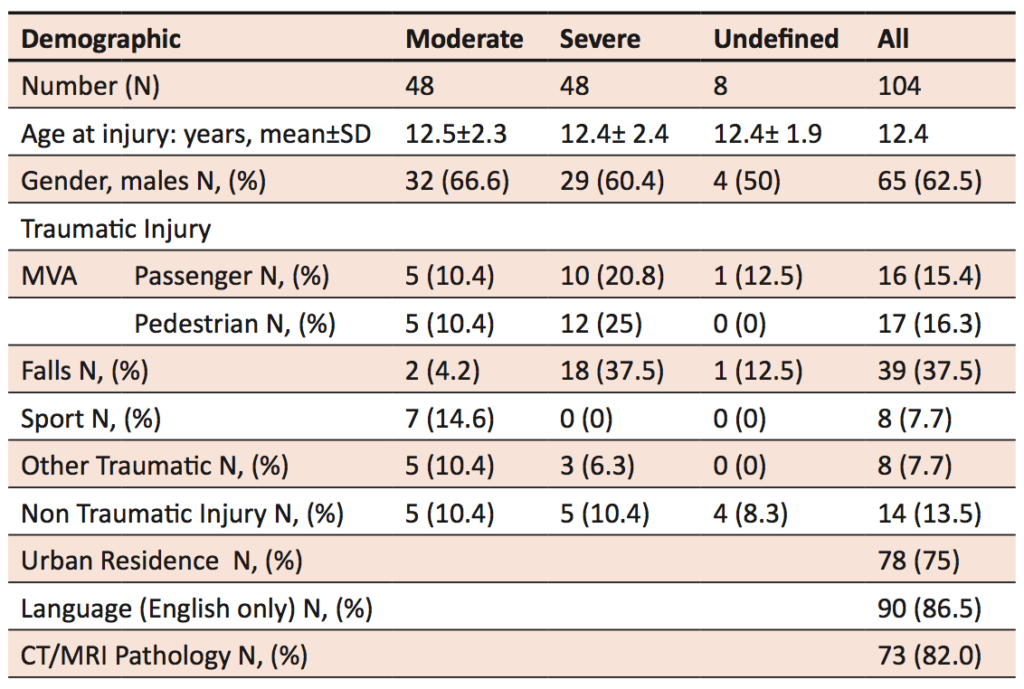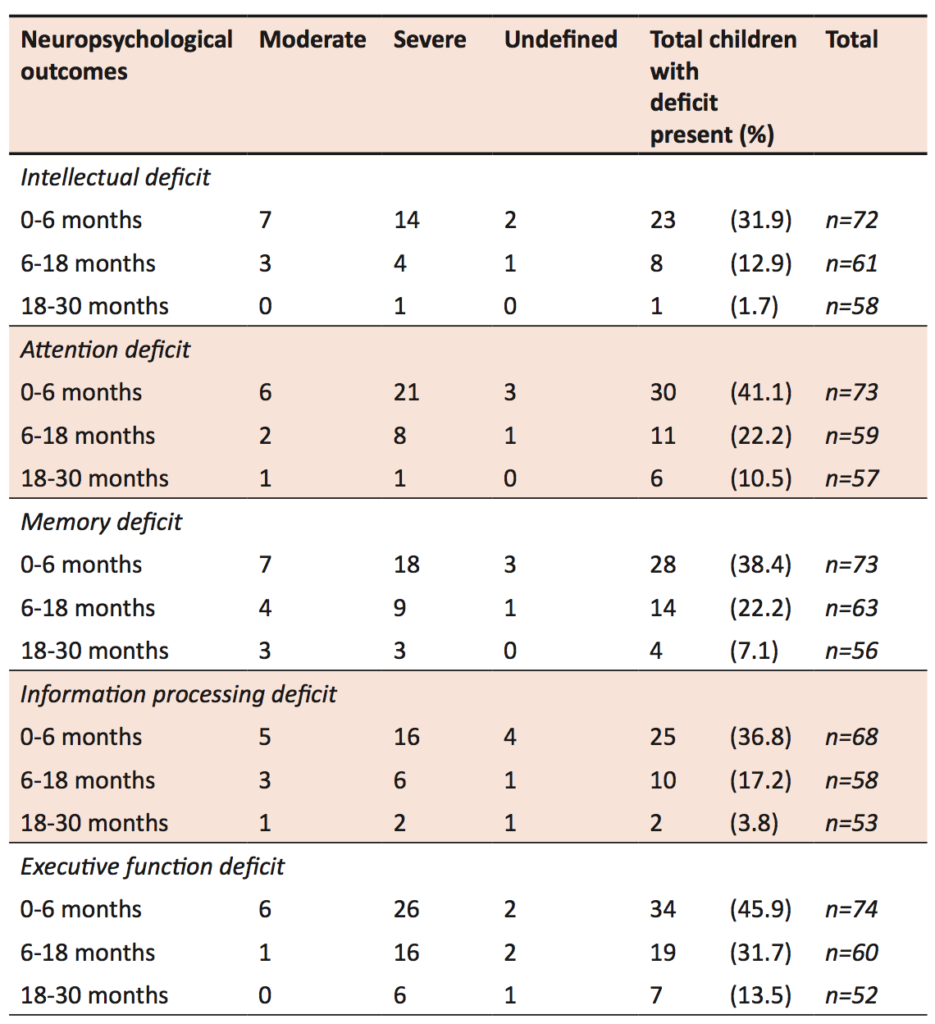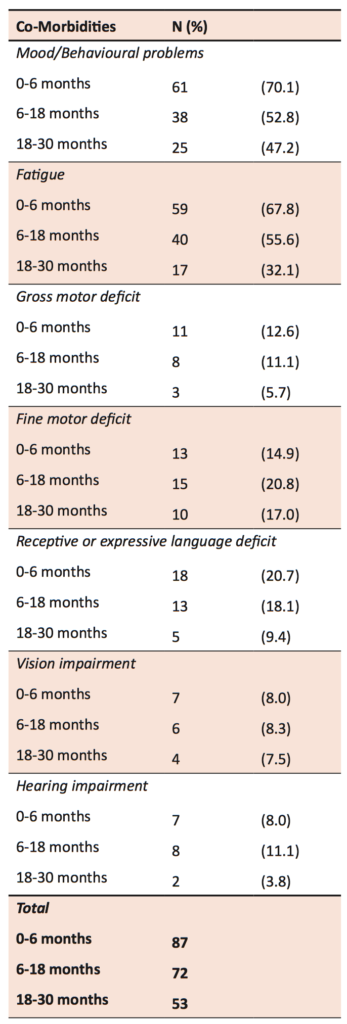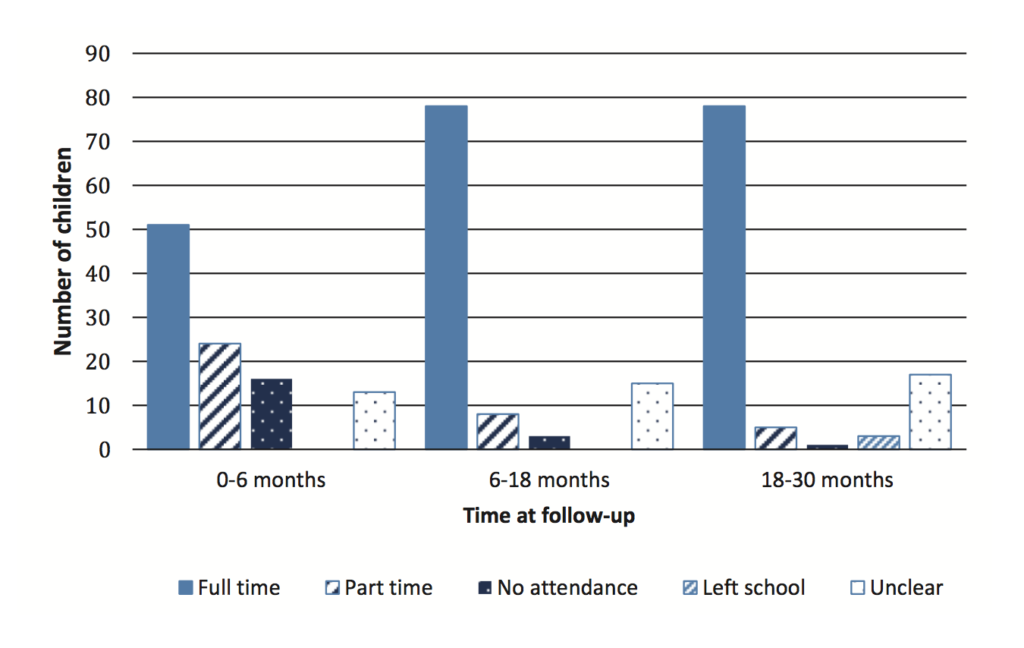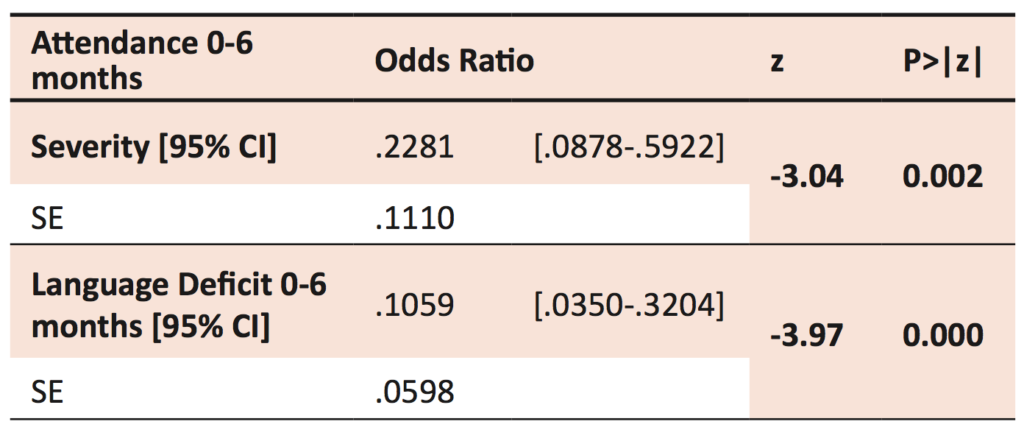Abstract
Introduction:
The World Health Organisation recommends that all pregnant women receive at least four antenatal visits. However, nearly half of all women worldwide, particularly in less developed countries, do not receive this care. Antenatal care (ANC) provides an opportunity to improve the outcome of pregnancy and reduce maternal and fetal mortality rates, particularly in low- and middle-income countries.
Summary:
There is a critical need for evidence-based studies surrounding ANC and its provision and uptake, both in Australia and on an international level. This is to ensure that the care provided is specific to the needs of every woman the medical community serves. In this article, we examine a Cochrane review of a variety of community-based and health systems-related approaches that target determinants of reduced ANC coverage. The review aims to address the issues affecting antenatal care coverage, highlight the gaps in the care we currently provide, and discusses its implications for the current healthcare policies regarding ANC provision. While transport and cost remain the basic barriers to accessing ANC, woman-doctor partnerships, contextual care, women’s satisfaction, and cultural safety are also of paramount importance if ANC is to reach more women. The part clinicians play, particularly in delivering holistic and woman-centered care, must also be realised in order to restructure care to be more coordinated and effective.
Introduction
Michelle Obama once said, “Communities and countries and ultimately the world are only as strong as the health of their women [1].”
Antenatal care (ANC) plays an important role in assisting and preparing pregnant women mentally, emotionally, and physically for childbirth. ANC ensures that the well-being of both the mother and child is well monitored to ensure an ongoing pregnancy with an increased likelihood of a successful birth and a healthy baby. Despite the importance of ANC for both mother and child, globally only 82% of pregnant women have access to at least one ANC visit during their entire gestation period, and only 54% receive the recommended minimum of at least four antenatal visits [2,3]. It is important to discern and address the causes of this disparity. A 2015 systematic review by Mbuagbaw and colleagues analysed a variety of community-based and health systems-related interventions that targeted determinants of reduced ANC coverage, in order to ascertain their effectiveness in increasing the number of women who received ANC [4]. This article analyses and interprets the findings of the review, exploring its implications for women, clinicians, and the broader medical community.
Summary of the systematic review by Mbuagbaw et al. [4]
The review evaluated results from up to 400,000 women across 34 randomised controlled trials assessing different methods of optimising antenatal care. Of these trials, 29 used a cluster-randomised design. The trials tested two main types of interventions both aimed at improving the uptake of ANC: health system interventions that included home visits for pregnant women and provision of adequate equipment for clinics; and community-based interventions, such as media campaigns, provision of education, or financial incentives for pregnant women.
Using one intervention, as opposed to none, was found to be effective as demonstrated by an increase in the number of women who received four or more antenatal visits, an increase in the number of women who received at least one antenatal visit, and the number of births carried out in a health facility. There was no evidence of any change in the number of pregnancy-related deaths or any impact on the rates of low birth weight babies [4].
Using a combination of interventions in comparison to no intervention resulted in an increase in the proportion of pregnant women who obtained at least one antenatal visit. Combined interventions also resulted in a reduction in perinatal deaths and a reduction in underweight babies, compared with no intervention. There were no differences between single interventions and combined interventions for any outcome measured [4].
The findings revealed that regardless of the number of interventions used the implementation of at least one intervention led to a positive outcome. In view of this, it is important to evaluate the methods used and to understand and appreciate why the interventions were successful.
Interpretation of the findings
Two main categories of interventions were used in the systematic review, as detailed above. The first targeted the health system and involved the reorganisation of health services and patient-centred care. This proved effective as it addressed the woman’s sociocultural context and agenda, serving as an example of patient-centred care as defined by the Institute of Medicine [5]. Both personal and social environments play a role in influencing the experience of pregnancy. It is therefore essential to consider these factors when administrating health services to ensure that the best care is provided and the needs and expectations of the woman are met [6].
The majority of the trials were implemented in low and middle income countries. Most pregnant women in these populations are still unable to gain access to healthcare and thus experience poorer health outcomes [7]. In a similar study that evaluated the factors affecting ANC attendance across four sub-Saharan regions, the results showed that the way women described ANC was often vague: many of the women had very generalised descriptions about care during pregnancy, what it comprised of, what transpired when one was administered ANC, and the necessity of at least four visits [8].
Moreover, the women often only sought ANC when they faced problems or uncertainties with their pregnancies. How the ANC services responded to these uncertainties, together with their general interactions with the pregnant women, affected women’s ANC attendance [8].The attitudes and behaviours of healthcare workers has long been recognised to influence patient care. Poor interpersonal relationships may act as a barrier to the successful conveyance and interpretation of information, a key component of a successful patient-centred interview [9].
In view of these results, the second intervention that targeted the community proved to be highly effective. The methods used were aimed at helping women, particularly pregnant women, gain a greater understanding of the purpose of ANC. A study carried out in Pakistan’s Punjab province showed that women’s lack of awareness of ANC was also responsible for low ANC coverage [10]. With limited knowledge, the use of ANC services is reduced. As health professionals, it is important that we never assume a woman has any previous health knowledge. Provision of information regarding the services rendered and their usefulness can prompt more women to use the available services while ideally improving patient satisfaction [11]. In addition, the provision of education about health in pregnancy should be culturally appropriate, including supplying a local adaptation of the written materials, making them culturally and linguistically applicable to the target population [6].
The second intervention additionally offered financial incentives, which increased access to ANC for women who were previously deterred due to its cost. It also addressed social mobilisation, which consequentially actuated community initiatives and creativity in addressing the problem at hand. This intervention also included changes in behaviour, such as birth preparedness, aimed at modifying behaviour patterns that can cause low ANC uptake.
Implication of the systematic review findings
A woman-centred healthcare system involves the meaningful engagement of women and the formation of partnerships with the woman and their families. The trust that arises as a result of a strengthened woman-provider relationships has the power to drive change in healthcare delivery. Taking time to build rapport helps improve women’s experience of ANC. It requires effective communication as women who understand their healthcare providers are more likely to understand their treatment and adhere to follow-up recommendations [12].
“Put patients first” declared Harvey Fineberg, President of the Institute of Medicine. “When one has truly understood what the patient needs, they have truly put the patient first [13].” Both interventions used in this study involved reaching out to individual women. Findings revealed that the usage of ANC was considerably lower in women who lived far from the place ANC was delivered, as the long distances reduced access. This was largely the case for women living in rural and remote areas [14]. The use of mobile clinics and greater involvement of the healthcare system, such as requiring skilled attendants to make home visits to pregnant women in remote communities, would greatly reduce such problems. Mobile clinics in particular, as an integral part of the healthcare system, have proven to be highly beneficial in the provision of high-quality, low-cost care to vulnerable isolated populations. They offer a wide scope of services tailored to the community’s needs, thus removing the logistical constraints (transport and financial issues, long waiting periods, and complex and often tedious administrative practices) faced by many [15].
Adequate improvements in the utilisation of ANC and thus its coverage require much more than an increase in the health workforce or an increase in the number of health centres established. It demands a greater focus on a woman’s overall social, political, and economic determinants of health. When ANC provision is both theoretically and contextually opposed to local beliefs and experiences, its usage is diminished, especially when women experience any form of abuse in their care setting or when their attendance puts them at risk from their immediate family or community [16].
Implications within an Australian context
In 2002, Hunt published research aimed at improving ANC, its protocols, and practice in the Northern Territory in Australia [17]. He suggested that antenatal visits be prolonged in time, but less in number, thus making them more likely to be comprehensive and delivered in a more flexible woman-centred manner that makes no generalisations or assumptions about its patients. Likewise, the Daruk Aboriginal Community Controlled Medical Service in New South Wales succeeded in achieving earlier ANC attendance and increasing the number of ANC visits through a comprehensive primary healthcare program. This program incorporated a wide range of ANC services, including home visits and transport provision, both examples of strategies which could be extended to many other Aboriginal communities [18,19]. Conversely, a large proportion of Aboriginal and Torres Strait Islander people live in urban or inner regional areas and have their healthcare channelled through mainstream services. Therefore, it is imperative that we optimise the care we provide to these groups by applying the same principles of cultural competence in all healthcare services, in order to heighten the authentic involvement of women in decision-making. Such measures have the potential to see a greater proportion of this population gain access to the services available to them [19].
These interventions could prove to be very useful in many rural and remote regions, and specifically the Aboriginal community through the engagement of the wider community. The assistance from Aboriginal health workers facilitates communication and understanding between the woman and the healthcare provider, which may consequentially engender trust and responsiveness to ANC [20].
Recommendations
Therefore, when providing care as health professionals, we need to consider the woman’s context and establish a holistic approach that addresses the needs and concerns of that specific woman [17]. This is pertinent in places where culture plays a pivotal role. ‘Shame’ in Australian Aboriginal communities is a culturally-held belief that introduces behaviours and attitudes, evident in patient-doctor encounters, that can be easily misconstrued, resented, and/or disregarded by care providers who fail to appreciate its role in a woman’s life and family [18]. A basic yet appreciative understanding of the history and policies that have moulded the lives of Aboriginal women and their families may assist in the comprehension of some of their health behaviours. For example, the systematic removal of Aboriginal children from their families, the Stolen Generation, has been suggested as a prevailing source of distrust in the Aboriginal mothers’ community [19,20]. Provision of a healthcare service that is culturally equipped to provide holistic ANC is essential if we are to successfully reach out to all communities, including the Aboriginal community.
Conclusion
Based on the findings of this systematic review, it is evident that several interventions were effective in increasing ANC coverage and improving other pregnancy-related outcomes. Reported interventions addressed the common problems that affected the utilisation of ANC, which included maternal knowledge, accessibility to healthcare facilities, and financial difficulties. Accordingly, as doctors and future practitioners, it is imperative that as we provide maternal and antenatal care, we structure the healthcare services we provide around the woman and cater to their individual preferences, needs, and concerns. We are advised to accommodate the woman as much as we can, which means providing them with care that is specific to them and care that addresses the whole person [15-17]. The evidence obtained in Mbuagbaw’s review should be applied effectively in all areas, especially in those places with low ANC coverage [4]. This also serves as an indicator of the gaps in the current evidence that still require further research.
Therefore, instead of asking “Why do women not accept the service that we offer?” the important question should be “Why do we not offer a service that women will accept [22]?”
Conflict of interest
None declared.
References
[1] Obama M. A plea for education [Internet]. TED talks; 2009 [updated 2009 Apr 2; cited 2016 Apr 2]. Available from: http://www.ted.com/talks/michelle_obama?language=en
[2] Only half of women worldwide receive the recommended amount of care during pregnancy. UNICEF Data: Monitoring the Situation of Children and Women [Internet]. The United Nations Children’s Fund; 2015 [updated 2015 Jul; cited 2016 Mar 14]. Available from: http://data.unicef.org/maternal-health/antenatal-care.html
[3] Antenatal care: Global Health Observatory (GHO) data [Internet]. Switzerland: World Health Organization; 2017 [updated 2017; cited 2017 Mar 13]. Available from: http://www.who.int/gho/mdg/maternal_health/antenatal_care_text/en/
[4] Mbuagbaw L, Medley N, Darzi AJ, Richardson M, Habiba Garga K, Ongolo-Zogo P. Health system and community level interventions for improving antenatal care coverage and health outcomes. Cochrane Database Syst Rev. 2015;(12):CD10994. doi:10.1002/14651858.CD010994.pub2
[5] Institute of Medicine, Committee on Quality of Health Care in America: crossing the quality chasm. A new health system for the 21th century. Washington, D.C: National Academy Press; 2001:6
[6] Clinical practice guidelines antenatal care – module I: understanding the women’s context [Internet]. Australian Department of Health; 2013 [updated 2013 Apr 2; cited 2016 Mar 19]. Available from: http://www.health.gov.au/internet/publications/publishing.nsf/Content/clinical-practice-guidelines-ac-mod1~part-a~woman-centred-care~womans-context.
[7] Women’s health: the new national agenda: AWHN position paper [Internet]. Australia: Australian Women’s Health Network; 2008 [cited 2016 Mar 19]. Available from: http://whnsw.asn.au/wp-content/uploads/2016/01/AWHN_Position_Paper.pdf
[8] Pell C, Meñaca A, Were F, Afrah NA, Chatio S, Manda-Taylor, et al. Factors affecting antenatal care attendance: results from qualitative studies in Ghana, Kenya and Malawi. PloS One. 2013;18(1):e53747. doi:10.1371/journal.pone.0053747
[9] Holmes W, Goldstein M. “Being treated like a human being”: attitudes and behaviors of reproductive and maternal health care providers [Internet]. 2012 [cited 2016 Apr 14]. Available from: https://www.burnet.edu.au/system/asset/file/1408/Holmes_et_al_attitudes_review_sept2_final.pdf
[10] Majrooh MA, Hasnain S, Akram J, Siddiqui A, Memon ZA. Coverage and quality of antenatal care provided at primary health care facilities in the ‘Punjab’ province of ‘Pakistan’. PLoS One. 2014; 9(11):e113390. doi:10.1371/journal.pone.0113390
[11] Galle A, Van Parys AS, Roelens K, Keygnaert I. Expectations and satisfaction with antenatal care among pregnant women with a focus on vulnerable groups: a descriptive study in Ghent. BMC Womens Health. 2015;15(1):1-12. doi:10.1186/s12905-015-0266-2
[12] Frampton S, Guastello S, Brady C, Hale M, Horowitz S, Smith SB, Stone S. Patient-centered care improvement guide [Internet]. Picker Institute; 2008 [updated 2008 Oct; cited 2016 Mar 26]. Available from: http://www.patient-centeredcare.org
[13] Cooney E. Put patients first [Internet]. Harvard Medical School; 2013 [updated 2013 May 30; cited 2016 Mar 13]. Available from: http://hms.harvard.edu/news/put-patients-first-5-30-13
[14] Ye Y, Yoshida Y, Harun-Or-Rashid M, Sakamoto J. Factors affecting the utilization of antenatal care services among women in Kham district, Xiengkhouang province, Lao Pdr. Nagoya J Med Sci. 2010;72(1):23- 55.
[15] Hill CF, Powers BW, Jain SH, Bennet J, Vavasis A, Oriol NE. Mobile health clinics in the era of reform. Am J Manag Care. 2014;20(3):261-4.
[16] Finlayson K, Downe S. Why do women not use antenatal services in low- and middle-income countries? A meta-synthesis of qualitative studies. PLoS Med. 2013;10(1):e100373. doi:10.1371/journal.pmed.1001373
[17] Hunt J. How can routine antenatal care protocols and practice in the Northern Territory be improved? A discussion paper [Internet]. Centre for the Study of Mothers’ and Children’s Health, La Trobe University; 2002 [cited 2016 Apr 14]. Available from: http://citeseerx.ist.psu.edu/viewdoc/download?doi=10.1.1.602.9270&rep=rep1&type=pdf
[18] Kildea S, Kruske S, Barclay L, Tracy S. ‘Closing the Gap’: how maternity services can contribute to reducing poor maternal infant health outcomes for Aboriginal and Torres Strait Islander women. Rural Remote Health. 2010;10(1383):1-18.
[19] Clarke M, Boyle J. Antenatal care for Aboriginal and Torres Strait Islander women. Aust Fam Physician. 2014;43(1):20-4.
[20] Simkhada B, Teijlingen ER, Porter M, Simkhada P. Factors affecting the utilization of antenatal care in developing countries: systematic review of the literature. J Adv Nurs. 2008;61(3):244-60. doi:10.1111/j.1365-2648.2007.04532.x
[21] Stolen Generations History. National Sorry Day Committee [Internet]. National Sorry Day Committee; 2015 [updated 2015 May 24; cited 2016 Apr 12]. Available from: http://www.nsdc.org.au/stolen-generations-history/
[22] Phumaphi J, Evans T, Van Lerberghe WV, Manuel A, Matthews Z, Wolfheim C, et al. Make every mother and child count: World Health Report 2005. WHO: Sexual and reproductive health [Internet]. Switzerland: World Health Organization; 2005 [updated 2005; cited 2016 Apr 2]. Available from: http://www.who.int/whr/2005/whr2005_en.pdf?ua=1

